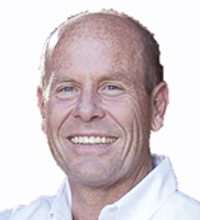Perfect TENs
Geothermal heat pumps tied into building loops and thermal energy networks will be as simple as installing window air conditioners or washing machines.

Now that more than a dozen states have adopted thermal energy network legislation, it’s time to look at all the new sectors opening in the hydronics and geothermal heating and cooling industry.
The pipefitters of our nation have the lion’s share of this work. Much like the natural gas revolution during the 1950s and 1960s, thermal energy networks (TENs), which look like water mains, will need to be installed under the streets in every city in the nation. This represents millions of miles of large-diameter pipe and additional miles of piping inside buildings.
If this sounds like a monumental task, remember that we have done it before with natural gas. This time, it will be with water-based heat transfer fluids — no more explosions.
Design professionals, whether architects, engineers or specialty designers, will be busy for the next 30 years. If you’re looking for something to recommend as a great field of study, the pipe trades or mechanical engineering-type studies have exceptional employment opportunities.
The number of shallow and deep well drillers will increase exponentially in the coming years. Drilling is one of the most lucrative professions that can be found. It’s hard work and takes much more training than most people know; ask Brock Yordy, one of the industry greats in this field.
Improvements in heat pump design will come fast and furious over the next couple of decades. Involvement in these services as an energy engineer is a great field with plenty of opportunities. Solid-state technologies to produce heating and cooling and better heat transfer technologies are in development. Turning low-grade thermal energy into electricity is another field poised to explode, with only a few pioneers producing novel designs.
The development of new technologies for repiping buildings is already off to a great start. Many old buildings need overcladding to improve envelope performance, and integrated design features for this overcladding that include hydronic components are beginning to emerge already.
The opportunity to design wastewater systems that integrate heat transfer through integrated pipe coils is already seeing remarkable growth. The opportunities for better designs will always be there. Manufacturing these concentric piping designs is only limited by our imagination and ingenuity.
While many of these thermal energy networks will be owned and run by private and public utilities, the advent of energy service companies in this arena has become lucrative. Essentially, energy service companies provide all the funding for a thermal energy upgrade and then charge the customer for thermal energy at a rate designed to save them money while paying off these investments.
As any utility will tell you, this can be a real win-win situation; look at their bottom-line profits.
Training curriculum developers for water-source heat pump installers will be busy for decades as these technologies improve to what essentially is a “plug-and-play” device-type industry. Geothermal heat pumps tied into building loops and TENs will eventually become as simple as installing a window air conditioner or clothes washing machine. Once the infrastructure is in, the heat pumps can typically be “plugged” into the hydronic networks safely and easily.
The business of quality inspections, either by private entities or municipal governance, is going to triple or quadruple in size as these systems continue to go in. Because no consumables other than electricity are involved, fluid integrity becomes paramount. Heat transfer fluid entities providing full service and fluid integrity telemetry are entering the industry already.
No matter what part of the trades or professional design industry you’re looking at, thermal energy networks will likely increase the value of those employment opportunities presently and into the future.






